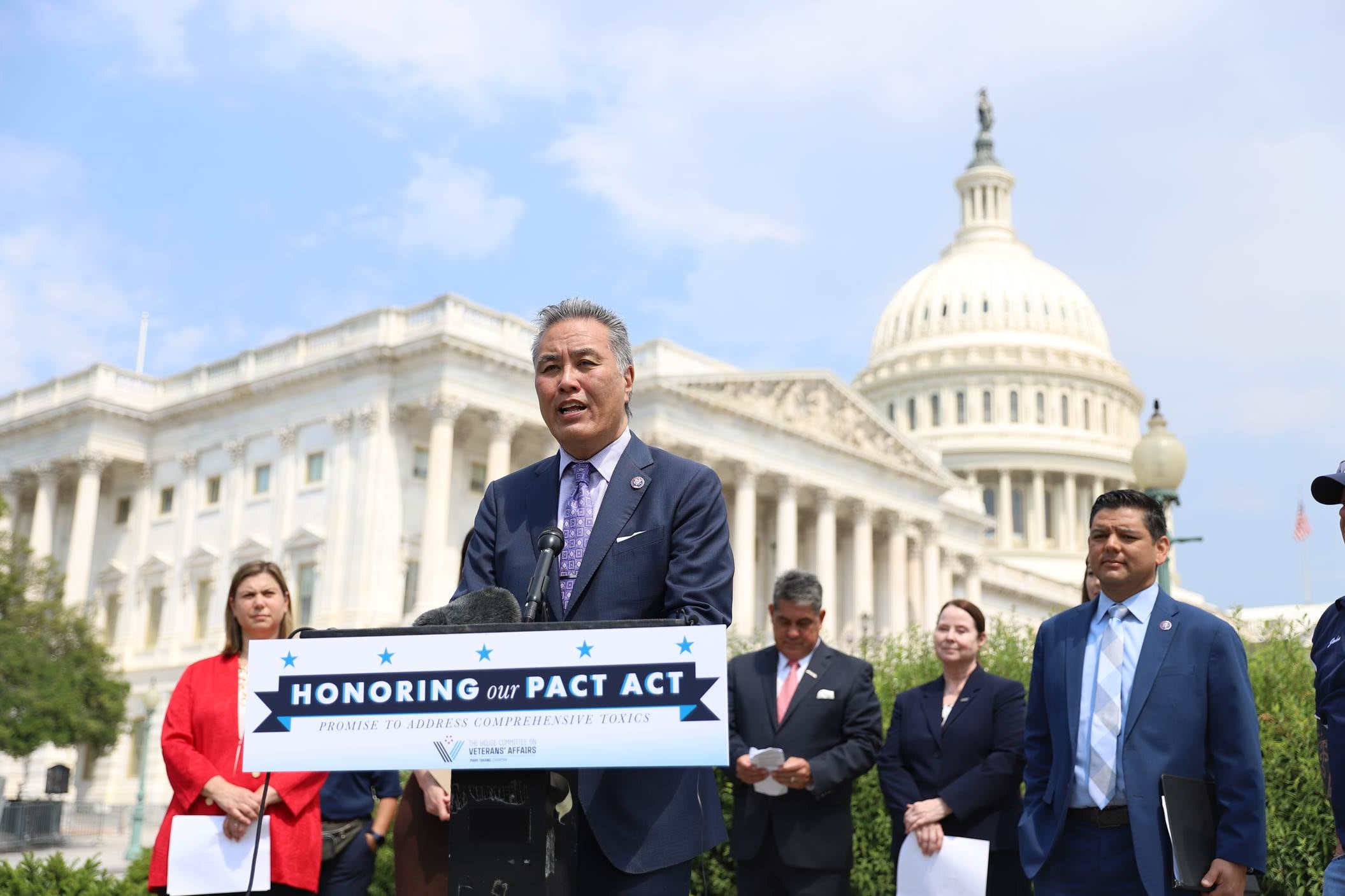Congressional plans to dramatically expand disability benefits for military toxic exposure victims could cost nearly $85 billion in the next five years and more than $280 billion over the next decade, according to a new analysis from the Congressional Budget Office released Tuesday.
The hefty price tag is likely to cause significant concern among lawmakers considering the legislation, which advocates have argued is needed to properly compensate veterans for the injuries they received while serving overseas.
But in a statement, House Veterans’ Affairs Committee Chairman Mark Takano, D-Calif., said he is still committed to passing the measure into law.
RELATED

“While this cost may raise eyebrows at first, this is but a fraction of what our country spent on the war efforts in Iraq and Afghanistan,” he said. “When we sent our service members into harm’s way, we made a promise to care for them — and pay for that care — when they came home. This is the true cost of that promise.”
The plan — dubbed the Promise to Address Comprehensive Toxics (PACT) Act — was introduced by Takano over the summer.
As many as one out of every five living American veterans could receive some sort of new disability payout or medical care under the proposal.
It includes adding hypertension to the list of illnesses presumed caused by military service in Vietnam and presumptive status for radiation poisoning for thousands more veterans who served in areas where nuclear testing and weaponry was used.
It would also mandate that 23 cancers and respiratory illnesses believed linked to the toxic smoke from military burn pits be covered for medical care and benefits payouts for troops who served during the Iraq and Afghanistan wars.
And many of the provisions would be retroactive, meaning veterans could see checks of tens of thousands of dollars for previously rejected disability claims related to the newly covered conditions.
Paying for that would be costly, however.
CBO officials estimated that about 1 million veterans will be eligible for new medical care options in the next five years under the bill, and more than 2 million will be eligible for new disability payouts.
RELATED

The $280 billion price tag — about $10 billion more than the entire VA budget request for fiscal 2022 — depends on numerous factors, including how VA implements the new law and how many veterans actually file for the new benefits.
But it would create headaches for lawmakers who must offset part of the spending with other budget cuts, and create conflict with fiscal conservatives who have lamented the ever-growing cost of VA benefits programs over the last two decades.
Senate Veterans’ Affairs Committee officials offered a similar measure earlier this year which the CBO said could cost $188 billion over 10 years. That plan includes fewer retroactive benefits and some limits on the toxic exposure payouts.
Leo covers Congress, Veterans Affairs and the White House for Military Times. He has covered Washington, D.C. since 2004, focusing on military personnel and veterans policies. His work has earned numerous honors, including a 2009 Polk award, a 2010 National Headliner Award, the IAVA Leadership in Journalism award and the VFW News Media award.





